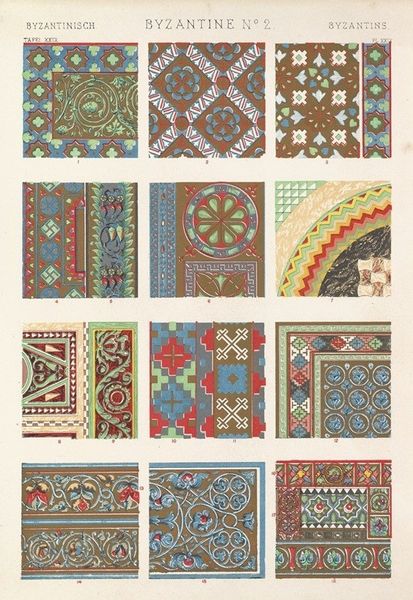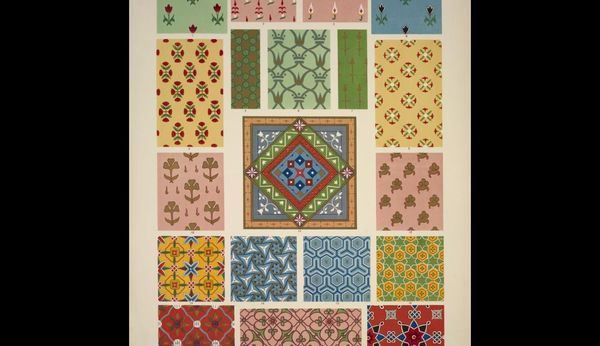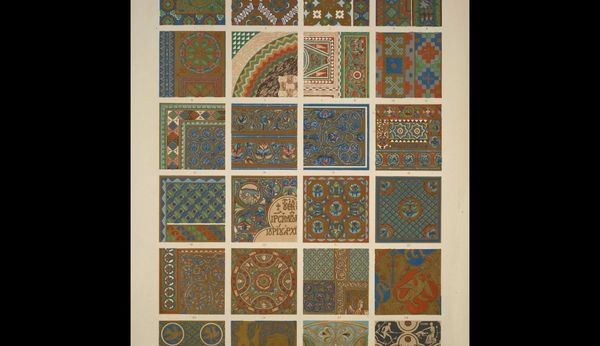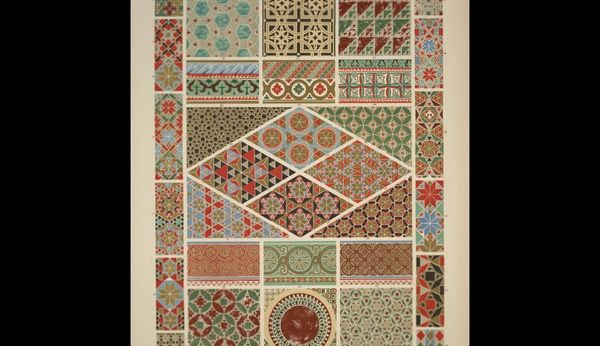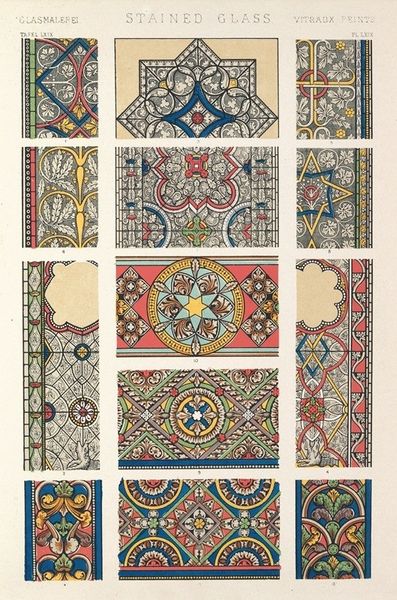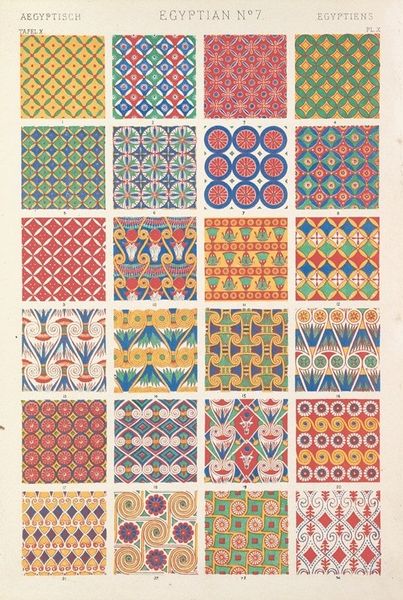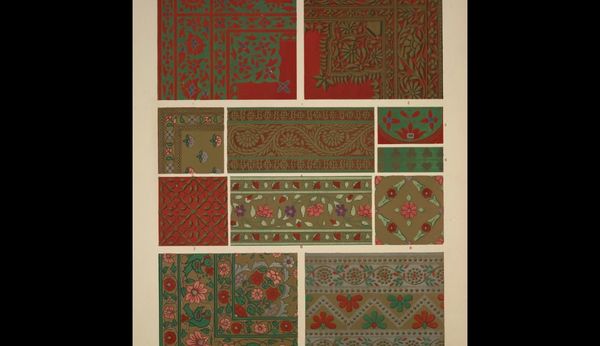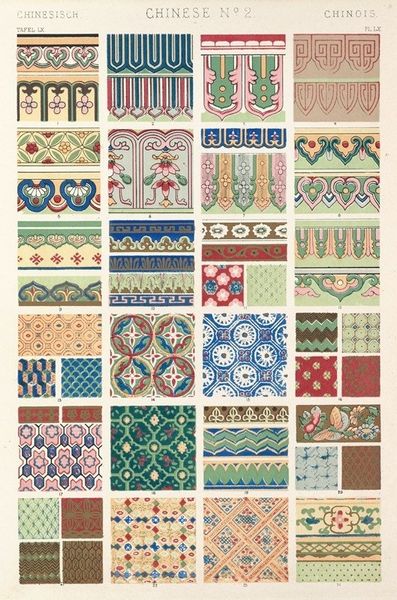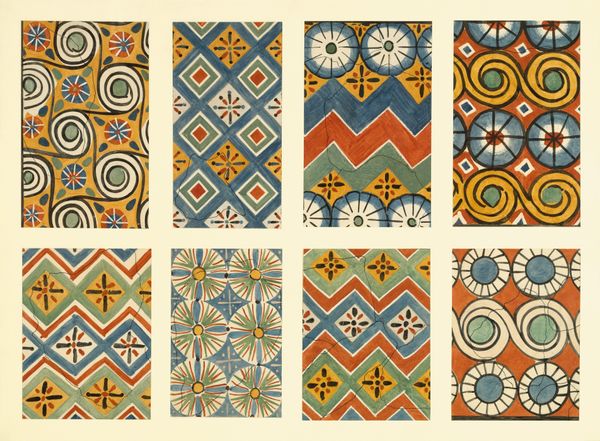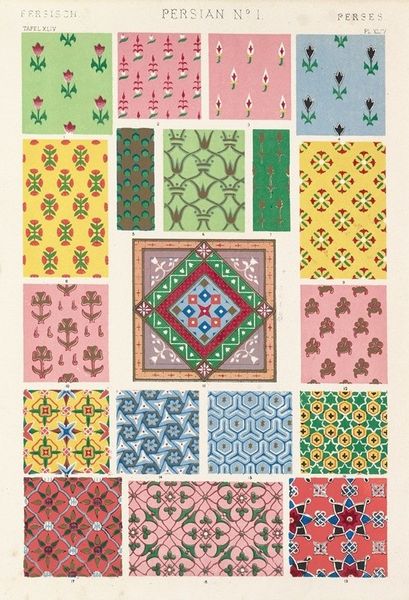
ornament, print, textile
#
pattern heavy
#
byzantine-art
#
ornament
# print
#
textile
#
collage layering style
#
fashion and textile design
#
pattern background
#
pattern design
#
geometric
#
fabric design
#
line
#
pattern repetition
#
textile design
#
decorative-art
#
imprinted textile
#
layered pattern
Copyright: Public Domain: Artvee
Editor: So, here we have "Byzantine No. 2a," a print by Owen Jones from 1856, showcasing a series of intricate, textile-like ornament designs. I find the sheer density of pattern quite overwhelming. How do you interpret this work in its historical context? Curator: It’s not just pattern, but power. Consider 1856: the height of British Imperialism, fueled by industrial production and a hunger for resources and cultural capital. Owen Jones's work, seemingly decorative, is deeply implicated in this project. These "Byzantine" designs weren't viewed as simply aesthetic; they were understood as embodiments of cultural heritage, appropriated and re-presented for a Victorian audience, reinforcing colonial power structures. How does the act of replicating these patterns, stripping them of their original context, resonate with you? Editor: It feels… appropriative, even if the intention might have been to celebrate them. Like the Victorians were “collecting” cultures. So the “ornament” serves a larger purpose. Curator: Exactly. Ornament becomes a tool. Jones and his contemporaries believed in the moral power of design, thinking good design could uplift society. But who defined "good," and whose society were they uplifting? The orientalizing aesthetics flattens the source culture by converting symbols into decorative objects. How do you think the act of mass-producing these designs, making them accessible to a wider audience, might have further complicated the relationship between the colonizer and the colonized? Editor: It probably normalized the appropriation, blurring the lines further. By making them widely available, they become less ‘Byzantine’ and more… well, Victorian. I see it differently now! Curator: Precisely. The beauty masks a complex negotiation of power, knowledge, and representation. It reminds us that aesthetic choices are never neutral; they always carry a cultural and political charge. Editor: Thank you, that’s made me think a lot. Curator: Likewise. It’s in this intersection of historical analysis and contemporary critique that we find a richer understanding of art.
Comments
No comments
Be the first to comment and join the conversation on the ultimate creative platform.
